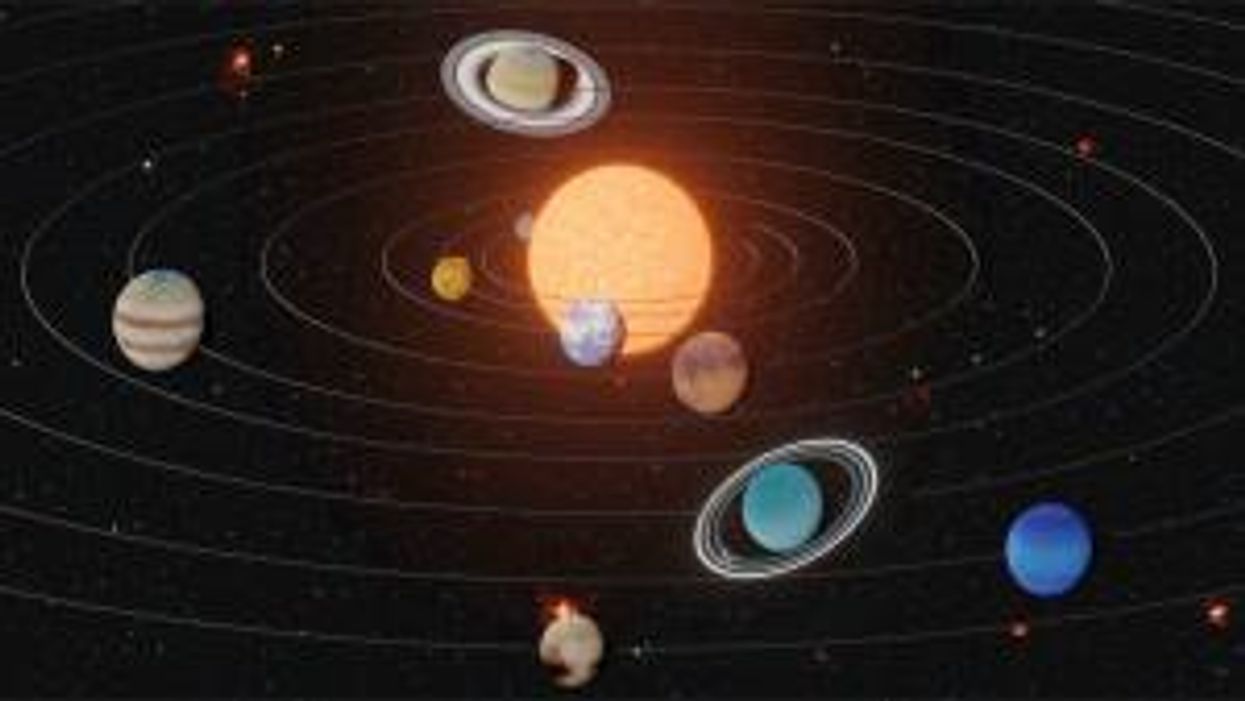Breanna Robinson
Jun 21, 2022
Mercury, Venus, Mars, Jupiter and Saturn Are All About to Line Up ...
Video
Jupiter has the remains of other baby planets inside of it, scientists note.
In a study published online in the journal of Astronomy and Astrophysics, the finding came about following the first clear view of the chemistry beneath the biggest planet's cloudy outer atmosphere.
"Jupiter was one of the first planets to form" within the first few million years when the solar system was taking shape around 4.5 billion years ago, said lead researcher Yamila Miguel in conversation with Live Science.
She is an astrophysicist at Leiden University in The Netherlands.
Miguel also said that they know almost nothing for sure about how it was formed.
Sign up for our free Indy100 weekly newsletter
In the new study, the researchers could finally look past Jupiter's cloud cover using gravitational data collected by NASA's Juno space probe.
This data helped the team map out the rocky material at the core of the giant planet, revealing a shockingly high presence of heavy elements. The chemical make-up suggests that Jupiter devoured baby planets, or planetesimals, to spearhead its growth.
On the other hand, there are two different theories as to how Jupiter got its initial rocky material.
The first theory is that the planet garnered billions of smaller space rocks, nicknamed pebbles by astronomers ( despite being closer to the size of a boulder).
The other theory, which is supported by findings in the newest study, suggests that Jupiter's core was formed from the absorption of many planetesimals or large space rocks that span several miles.
If left alone could have potentially acted as seeds from which smaller rocky planets like Mars or Earth could form.
But until recently, it hasn't been possible to see which of the theories was accurate.
Migule said: "Here on Earth, we use seismographs to study the interior of the planet using earthquakes. But Jupiter has no surface to put such devices onto, and Jupiter's core is unlikely to have much tectonic activity anyway.
"Juno provided very accurate gravity data that helped us to constrain the distribution of the material in Jupiter's interior. It is very unique data that we can only get with a spacecraft orbiting around the planet."
Jupiter's insides in the new model show that the heavy elements the planet has absorbed have stayed close to its core and the lower atmosphere.
Researchers had even believed the convection mixed up Jupiter's atmosphere so that warmer gas near the planet's core would rise to the outer atmosphere before cooling and falling back down.
However, Miguel noted that it is possible that certain areas within Jupiter may have a convection effect, but more research would be needed.
Elsewhere, these findings could also change up the origin stories for other planets.
"Jupiter was the most influential planet in the formation of the solar system," Miguel said before noting that the planet's gravitational pull helped shape its size and the orbits of its planetary neighbours.
These findings also suggest the potential planetesimal origin for other gas giants within the solar system, such as Saturn, Uranus and Neptune.
Have your say in our news democracy. Click the upvote icon at the top of the page to help raise this article through the indy100 rankings.
Top 100
The Conversation (0)













